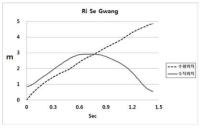[Purpose] It has been known that Korean Olympic Committee (KOC) was recognized by the International Olympic Committee (IOC) on June 20th of 1947, based on the fact that Korea National Olympic Committee (NOC) was recognized by the IOC session held in June of 1947. However, records and archives show that the recognition and the following conditions were somewhat different than what we have known. This study aimed to examine closely and explain how KOC was recognized in 1947, what was the conditions, and what was the role of Avery Brundage related to this agenda. [Methods] This study is a literature review. Brundage Collection, a package of records and letters which Avery Brundage has collected, and the archives of KOC in IOC Olympic Studies Center were examined. [Results] According to the records, Korean NOC was recognized provisionally with a condition of reviewing the situation of an independent nation and responsible for including the North Korean athletes. The unusual recognition appeared to be possible by the role and decision of Avery Brundage who defended the political and military situation of Korean peninsula. [Conclusions] The reviewed documents suggest a need of revision of KOC history as that KOC has been provisionally recognized in 1947 with some conditions. IOC viewed and recognized Korea as a single country and required KOC to include North Korean athletes. The role of Brundage should be revisited.
The purpose of this study was to critically interpret a certain sports-related idea, "Integrated Korean Team," which was an issue at the PyeongChang Winter Olympics. The idea emerges as a specific political agenda under the conditions of domestic politics and the special environment of Korean national affairs and discourse. To this end, we investigated media texts on the relationship between sports, political dynamics and views on related discourse that were produced in 1990-1991 and 2018. The main findings are as follows: First, sports functions as a political socialization tool for political power as it forms public opinion. Second, sports exchanges work as a kind of international politics. Specifically, political power controls sports as certain political situations arise and political elites' needs change. Third, mega sports events have tended to become politicized in recent years as they become more effective. Fourth, North Korea’s sports under political power cannot be easily dealt with by the private sector, and it has limitations because it is not politically independent. The analysis showed that the negotiation process and realization of the Integrated North and South Korean Team seemed to be a turning point in politics and sports. Here are the conclusions drawn from discussing the two unifying events in 1991 and the situation in 2018. First, both South and North Korea pulled the Integrated Korean Team card when political needs arose. Second, when the two Koreas did not need to reconcile due to changes in the political situation between the two Koreas, they did not want to make efforts to integrate Korean Team. Third, the position of the political elite was directly represented by the position of the South-North Korean team. Fourth, the supporting public opinions of the Integrated Korean Team are gradually diminishing as the power gap between the two Koreas widens and sports players' human rights issues emerge.

The aim of this study was to acquire essential information regarding Ri Se Gwang motion(element group Ⅱ, difficulty 6.4 point, double Tsukahara with tucked 1/1 twist), which Ri Se Gwang of North Korea performed during the final vault event of artistic gymnastic at Incheon Asian Game 2014, by analyzing motional characteristics. Firstly, Ri Se Gwang technique had second jump airborne time of 1.07 seconds and airborne height of 2.91m, which have great influences on the success of technique while having horizontal and vertical velocity of 2.73 m/s and 3.87 m/s, respectively, at the takeoff. These were sufficient jump motion for successful accomplishment of the technique however flight pattern was somewhat small which was mainly oriented vertically when compared to previous studies of Yeo and YANG Hak Seon 2 techniques. Secondly, blocking angle of vault contact was small at 9 degrees while having very small takeoff angle of 79 degrees. However, it had fast average trunk rotational velocity of 545 deg./s at the vault contact phase by rapidly bending trunk from the board takeoff until approaching the vault leading to achieve fast trunk rotational velocity of 452 deg./s after the take off in order to complete the airborne rotation successfully. Thirdly, the preparation phase of Ri Se Gwang technique had a distinct characteristics that the trunk was rapidly bent during the approach to the vault attempting aggressive blocking which leads to vertically oriented flight. It showed that this characteristic assists the motion of thigh snatch and the regulation of twist which strengthen airborne rotation for airborne rotational motion. And it also showed that sufficient landing and twist angles at the landing phase are possible with free rotational motion if the height of second jump reaches 3 m.








